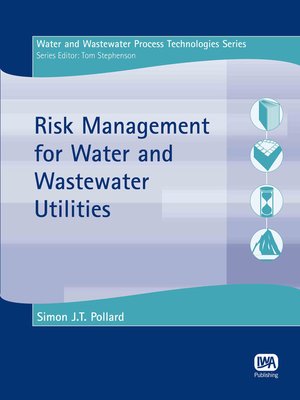Risk Management for Water and Wastewater Utilities
ebook ∣ Water and Wastewater Process Technologies
By Simon Pollard

Sign up to save your library
With an OverDrive account, you can save your favorite libraries for at-a-glance information about availability. Find out more about OverDrive accounts.
Find this title in Libby, the library reading app by OverDrive.



Search for a digital library with this title
Title found at these libraries:
| Library Name | Distance |
|---|---|
| Loading... |
The provision of safe drinking water and the protection of public health and the environment through the treatment of wastewaters is increasingly informed by risk-based decision-making. Aspects of utility management such as process design and optimisation, asset management and compliance monitoring rely on a mature understanding of process risk within a broader context of business and environmental risk management. For operators, risk management is now regarded as a key business function. Understanding risk and being able to implement risk management is critical to the provision of safe drinking water.
As part of a move towards a more strategic, forward looking approach to utility management, the IWA is promoting a risk-based approach to water utility management, from catchment to tap, through the implementation of the Bonn Charter (2004).Why manage risk?
Basic probability and statistics
Process risk and reliability analysis
Assessing risks beyond the unit process boundary
Regulating water utility risks
Business risk management for water and wastewater utilities
Managing opportunity and reputational risk
Embedding better decision-making within utilities Having provided rationale for the importance of risk management, the text begins with the familiar territory of unit processes and process reliability. It then broadens out to consider, first environmental then organisational risk management. The final sections are concerned with better utility decision-making. The book has been designed for individual self-paced study. Each section of the text gives step-by-step learning in a particular subject, that includes an approximation of how long you will need to spend on that section and provides key points that highlight the principles of the different sections. Each unit includes exercises to help understand the material in the text as well as self-assessment questions to test your understanding and text references.
As part of a move towards a more strategic, forward looking approach to utility management, the IWA is promoting a risk-based approach to water utility management, from catchment to tap, through the implementation of the Bonn Charter (2004).







